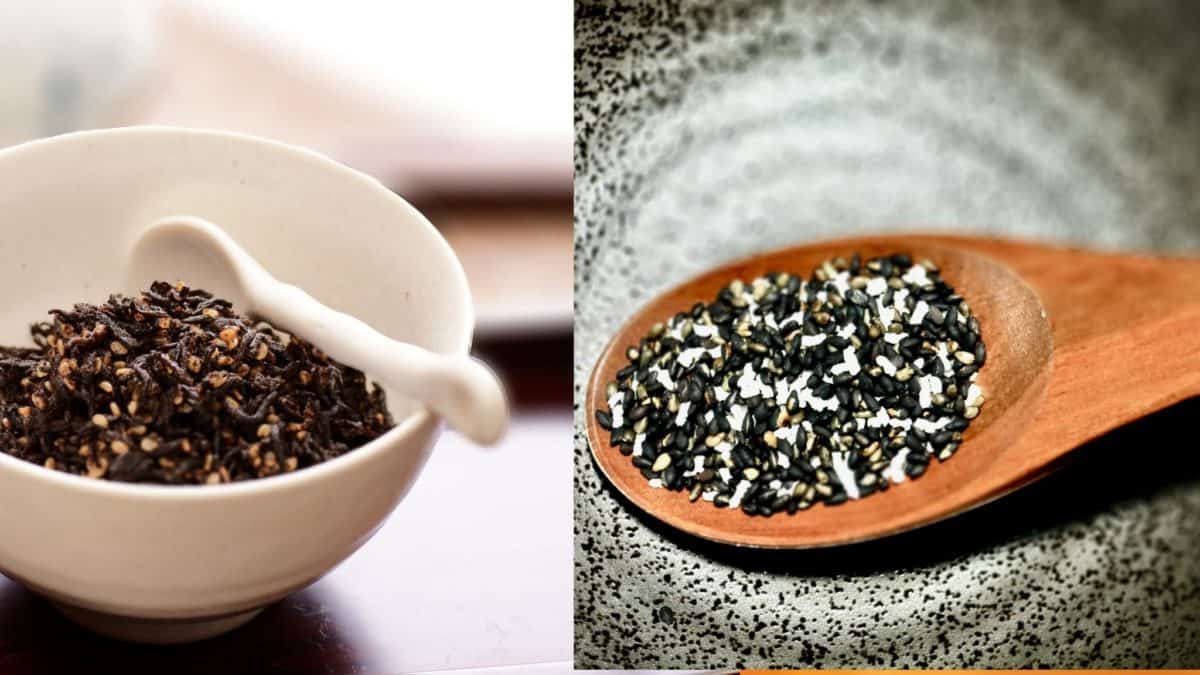Furikake VS Gomasio: Pick The Right Condiment For Your Rice
Two delicious Japanese condiments can add flavor and texture to your rice – furikake and gomasio.
But what’s the difference between these two condiments? And which one should you choose for your rice?
In this article, I’ll explore the differences and give you tips on how to choose the right condiment for your rice.


Check out our new cookbook
Bitemybun's family recipes with complete meal planner and recipe guide.
Try it out for free with Kindle Unlimited:
Read for freeIn this post we'll cover:
What is furikake?
Furikake is a Japanese condiment that is made with dried and ground fish, seaweed, and sesame seeds. It is usually used to season rice, but it can also be used on other dishes such as noodles and vegetables.
The most common type of furikake is made with salmon, but there are also other varieties made with tuna, bonito, and other fish. Furikake can be found in most Japanese grocery stores.
What is gomasio?
Gomasio is a Japanese condiment that is made with roasted and ground sesame seeds. It is similar to furikake, but it does not contain any fish or seaweed.
Gomasio is usually used to season rice and noodles. It can also be used as a topping for salads and vegetables.
The difference between furikake and gomasio
The sesame seeds in gomasio are unhulled (goma), then salt is added (shio); it’s also spelled gomashio.
Unhulled sesame seeds are the whole seeds that have not been hulled. They are a bit more bitter than hulled sesame seeds, but they also have a nuttier flavor.
Unhulled sesame seeds are used in gomasio and other Japanese condiments. They can also be used in baking and other recipes.
Furikake uses hulled and roasted sesame seeds, so you could say the flavor has less bitterness, although I find the bitterness of gomasio to be really in the background if at all tastable.
Furikake has a less earthy flavor, and it is more umami-rich because of the bonito flakes and dried fish. It’s also a little sweeter because of the added sugar.
You could say gomasio is a watered-down version of furikake because it uses fewer ingredients, but it has its own place in the spice rack, certainly for your Japanese dishes.
Also read: if you want to learn how to make furikake yourself, this is the recipe
How to choose the right condiment for your rice
If you want a more savory flavor for your rice, then furikake is the way to go. If you prefer a milder flavor, then gomasio is a good choice.
If, for example, I was making a meal with a lot of spices already, I’d probably season the steamed rice with gomasio to give it a little flavor but not too much.
What to use them with
Furikake and gomasio are both great condiments for rice, but they can also be used in other dishes. Here are a few recipes that use furikake and gomasio:
Salmon Furikake Rice Bowls
This recipe combines furikake with salmon and rice to create a delicious and nutritious meal.
Sesame Noodle Bowls with Gomasio
This recipe uses gomasio to season noodles and vegetables. It is a healthy and easy-to-make dish perfect for a quick lunch or dinner.
Black Sesame Tofu with Gomasio
This recipe uses gomasio to season tofu and vegetables, perfect for a vegan or vegetarian diet.
Conclusion
As you can see, both furikake and gomasio are versatile condiments that can be used in a variety of dishes.
Also read: what is furikake vs shichimi togarashi?
Check out our new cookbook
Bitemybun's family recipes with complete meal planner and recipe guide.
Try it out for free with Kindle Unlimited:
Read for freeJoost Nusselder, the founder of Bite My Bun is a content marketer, dad and loves trying out new food with Japanese food at the heart of his passion, and together with his team he's been creating in-depth blog articles since 2016 to help loyal readers with recipes and cooking tips.
